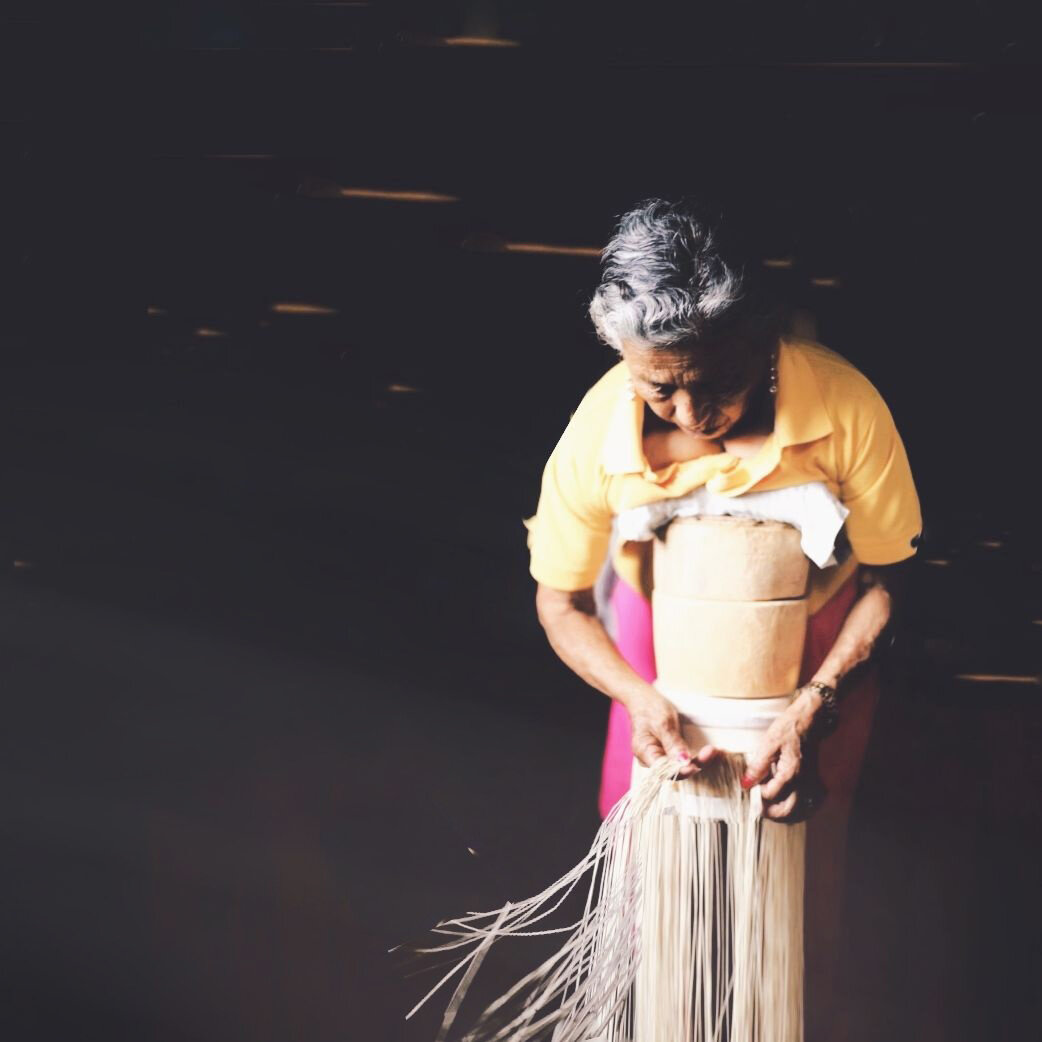Panama Weaver
Interview by Jéssica Chávez
Founder of CARLUDOVICA: an online store that connects the buyer to the weaver
The starting point for any Panama Hat is called 'The Template.' Just eight strands form the base at the tip of the crown. On its long & delicate path, the strands are continuously interwoven, like past generations who have handed down this knowledge.
The weavers' name is María Espinal, a beautiful woman with a captivating smile and kind eyes that look capable of making the whole world fall in love. She is 70 years old and has been weaving since she was 8. She learned while watching her grandparents and her mother weave, she used the scraps of the excess straw and began to cross them together until she achieved a kind of weaving. Through this process, she gradually perfected her skill until she was able to weave the Panama quality. When María married, she made real weaving miracles between managing her house and taking care of her children. She did it while the rest of the family slept and early in the morning. María always preferred to weave the thicker or essential weave, which takes 15 days to complete but is "Very pretty." Maria does not keep an exact count of how many bodies she has woven, but she estimates that there are more than 500 as of today. To put this into perspective, it would take a skilled weaver at least 20 years, without a single day's rest to make this quantity! María says that she is not a weaver of extra-fine Montecristi hats because you have to dedicate much more time. Meanwhile, Ana María, the wife of one of her children, proudly shows me the template that her husband worked for seven weeks to weave an extra-fine Montecristi Hat. In the fine craftmanship, you can almost hear the voices of children, ladies, men, and even the cry of a baby, people who have joined together, like the weaving threads.
María's house, like most of them in Pile, is made of cane, though some are made of adobe or brick, they are all small and basic. In this cane house, this elderly couple of hat weavers live with their granddaughters, Jéssica and María (the most popular name for the women in this town), they live with them while their parents work in the city. Everyone in Pile, where the finest and most famous toquilla hats in the world are woven, enjoys talking to visitors as if they were great friends and sharing everything about their lives. It was during this conversation I discovered that Doña María was sick. I asked her about her illness, and she told me, "Yes miss, my chest hurts a lot, so I went to the hospital. They did many tests and gave me a list of medicines that I should buy, but I couldn't do it because I didn't have enough money. I only had enough medicine for a week, Diosito, (God) has to heal me". But does Doña María feel better? "At times, yes and at times no, when I feel good, I go to the log to weave, and there I feel better ... and she smiles."
At this moment, I no longer knew what to say; anything was superfluous before a woman who stands in the face of illness, with so many shortcomings, and despite everything, she smiles. She looks at me and says, "I'm going to weave right now, watch me." She stands upright in front of her tree trunk, takes a deep breath, and it's as if she's entering another state; she bends her old body and then begins to weave, and this moment is magical... She and the toquilla seem to understand each other and give life to each other. Silence is created such that I only hear the shriek of the strands of straw; I bend over and photograph her between the toquilla, she looks at me, stops her work for a moment, and smiles; and it is that image that remains etched in my soul. Doña María, a very brave weaver with a lot of love and a whole lot of soul.








Meet Nadia Valavanis, founder and creator of BSVII ( BS- seven), who fuses her love of psychology and craftsmanship to turn her customer’s stories into stunning creations.